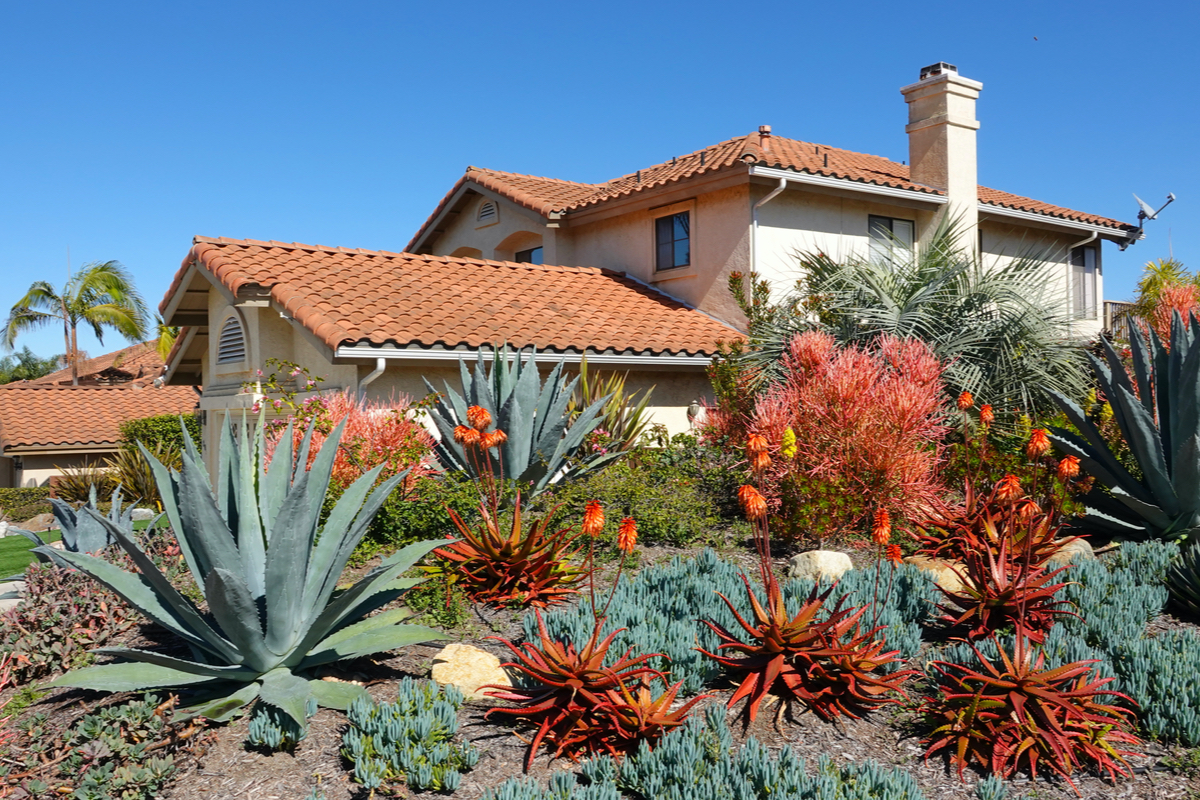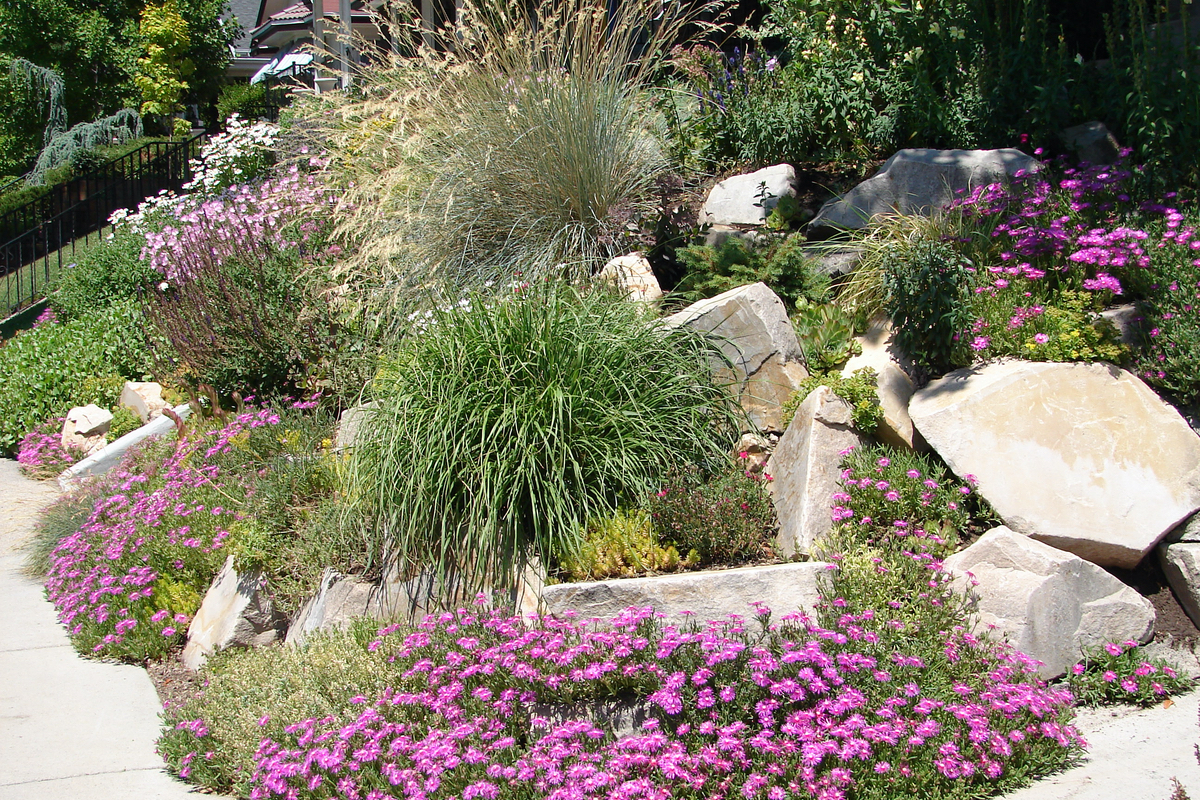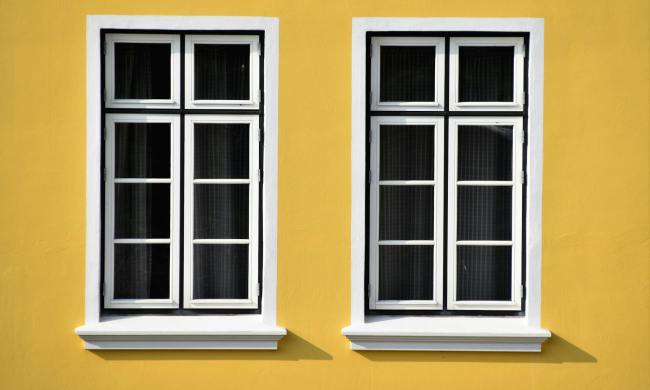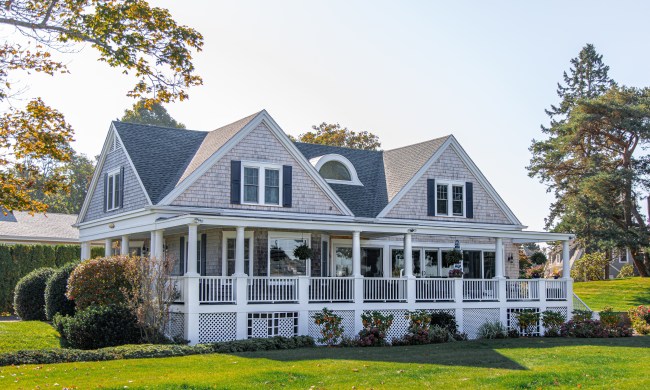Derived from “xeros,” the Greek word for “dry,” xeriscaping is landscaping purposely designed to thrive on little to no water at all. When done correctly, xeriscaping is not only beautiful to look at, but it can actually help reduce landscape water usage on your property by 50% to 75%, which can have a huge impact on your water bill.
While obviously practical in acrid areas where rainfall amounts are minimal, the benefits of xeriscaping make it desirable and attractive, no matter which part of the country you live in.
Easy to maintain and so much more affordable than the typical grassy lawn, xeriscaping could be exactly the right landscape plan for your property.

Reducing water consumption is only one of the benefits of xeriscaping
Here are some additional assets:
- Focuses on plants native to your growing region, which will thrive naturally without significant help from you
- Employs the use of compost to improve the soil while reducing the amount of compostable refuge that ends up in your trash
- Eliminates the need for sprinklers and relies instead on soaker hoses or drip irrigation
- Reduces the size of water-hungry lawns
- Saves you time spent on mowing, fertilizing, and watering lawns
Xeriscaping on a budget!
Here’s how to keep costs down when implementing your xeriscape plan:
- Try doing as much of the work yourself as possible — after all, landscaping can be very costly. Plus, imagine the satisfaction of seeing your xeriscape vision come to life while staying on budget!
- Select spreading plants that will continue to expand and grow as the years go on. Be careful to use native, noninvasive plants. Not sure what to use? Speak with the professionals at your neighborhood nursery or garden center.
- Make your own mulch — it’s easier than you think! Make piles of leaves, grass clippings, and even twigs from the yard and turn your trusty lawnmower into a shredding, mulch-making machine. Run them over several times with the mower until mulch is at a desired consistency.
- Hardscapes are the hard landscape materials used in place of vegetation — pathways, walls, rock gardens, etc. To minimize costs, keep purchased hardscape to a minimum and instead use rocks and boulders found in nature, or create pathways made from gathered stones or shells. Plus, gathered shells and stones from family vacations not only offer good aesthetics, but fond memories.
Simple xeriscape ideas!
The most well-designed xeriscape gardens include a mixture of different plant types and colors, various heights, and blooming seasons, as well as plantings with similar water needs.
Which plants you should include in your garden depends primarily on which growing region of the country you live in. Xeriscape plants that work well in Arizona are not likely to work in Connecticut. To ensure the success of your xeriscape landscape, you’ll want to first confirm your growing zone before making plant selections.
The USDA has developed a Hardiness Zone Map that divides North America into 11 different planting zones, with each zone being 10 degrees warmer (or colder) in an average winter than the one next to it. You can find your growing zone by speaking with a local landscape expert or online.
Xeriscape plants come in six major categories. For each category, we’ve listed a few popular choices, but there are so many others available. Remember to always check your growing zone before selecting any plants for your xeriscape landscape design:
- Perennials
- Cushion spurge
- German iris
- Moss phlox
- Ostrich fern
- Oriental poppy
- Shrubs
- Beauty bush
- Caragana
- Hansa rugosa rose
- Mugo pine
- Smooth sumac
- Trees
- Blue spruce
- Douglas fir
- Lodgepole pine
- Ponderosa pine
- Rocky Mountain juniper
- Ground Covers
- Bearberry
- Hens and chicks
- Mother of thyme
- Stonecrop
- Sweet woodruff
- Vines
- Honeysuckle vine
- Jackmanii clematis vine
- Silver lace vine
- Trumpet vine
- Virginia creeper vine
- Ornament Grasses
- Blue gramma grass
- Blue lyme grass
- Golden tufted hair grass
- Mexican feather grass
- Ribbon grass
Once you selected your plantings, customize your design by adding natural rocks and pathways made from hand-gathered stones or shells. Not only will your completed xeriscape design end up saving you money, it will also save you time you would have spent watering and maintaining your lawn. Now, that’s a win for everyone.




